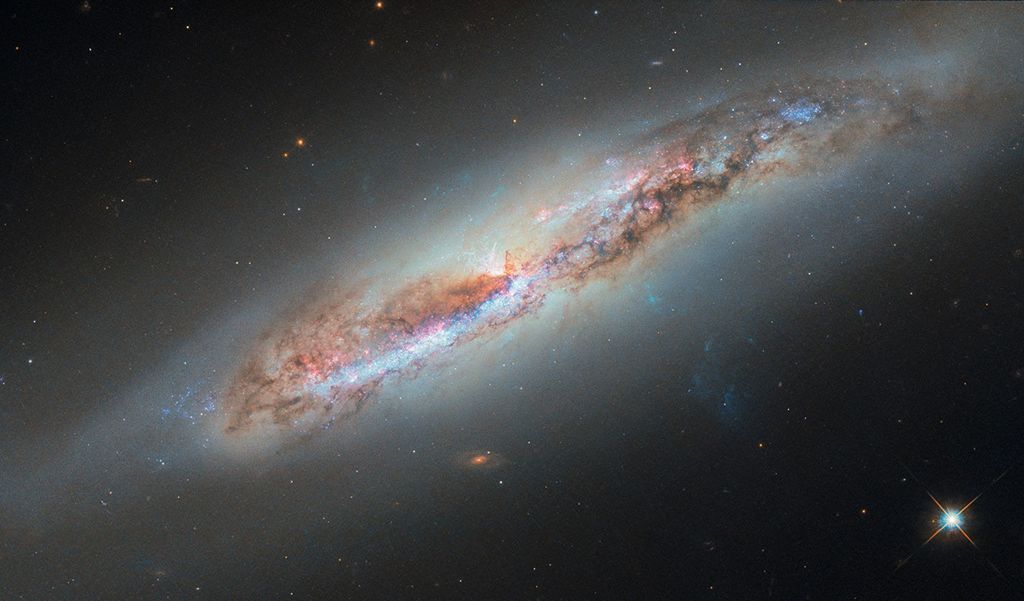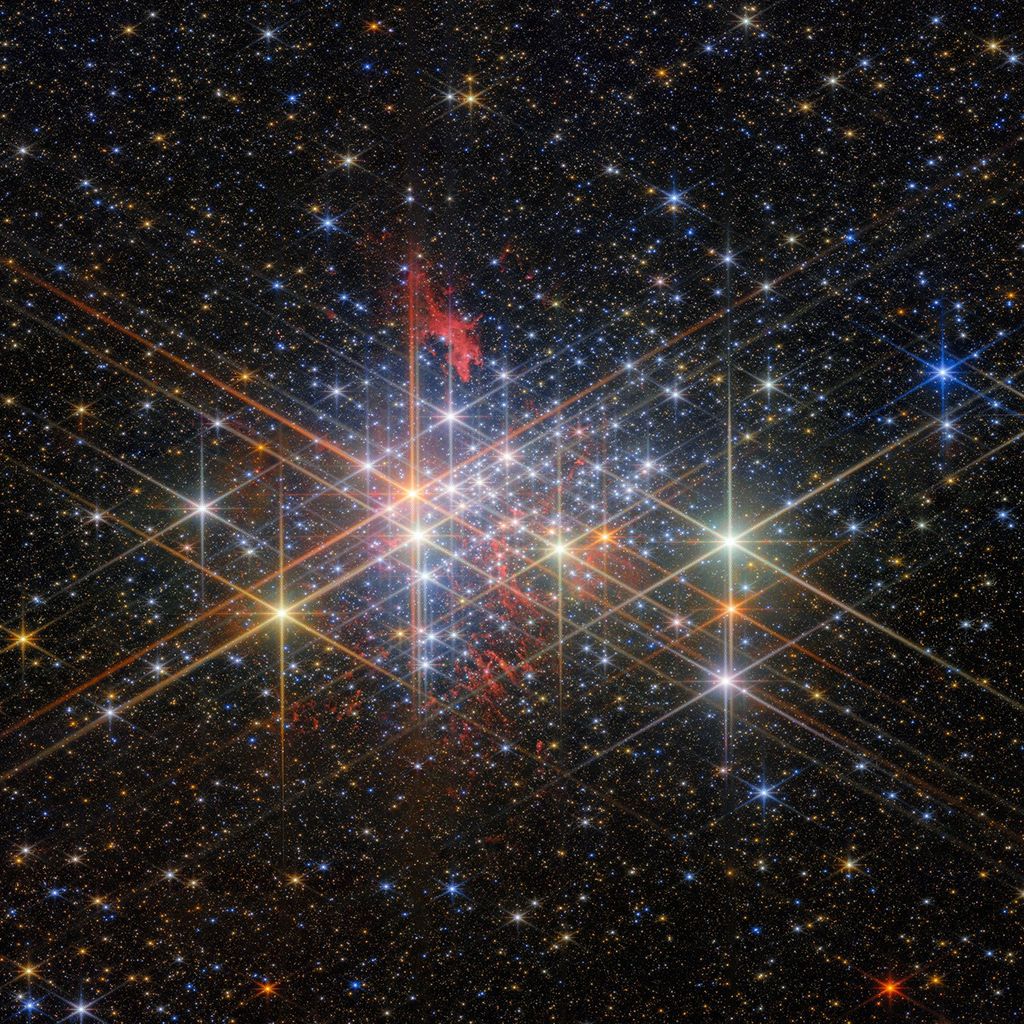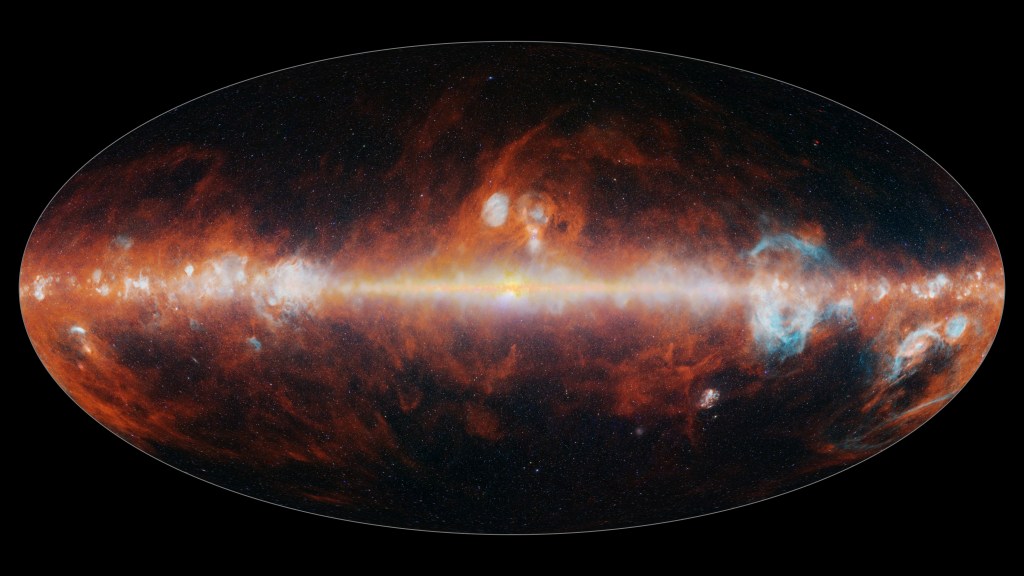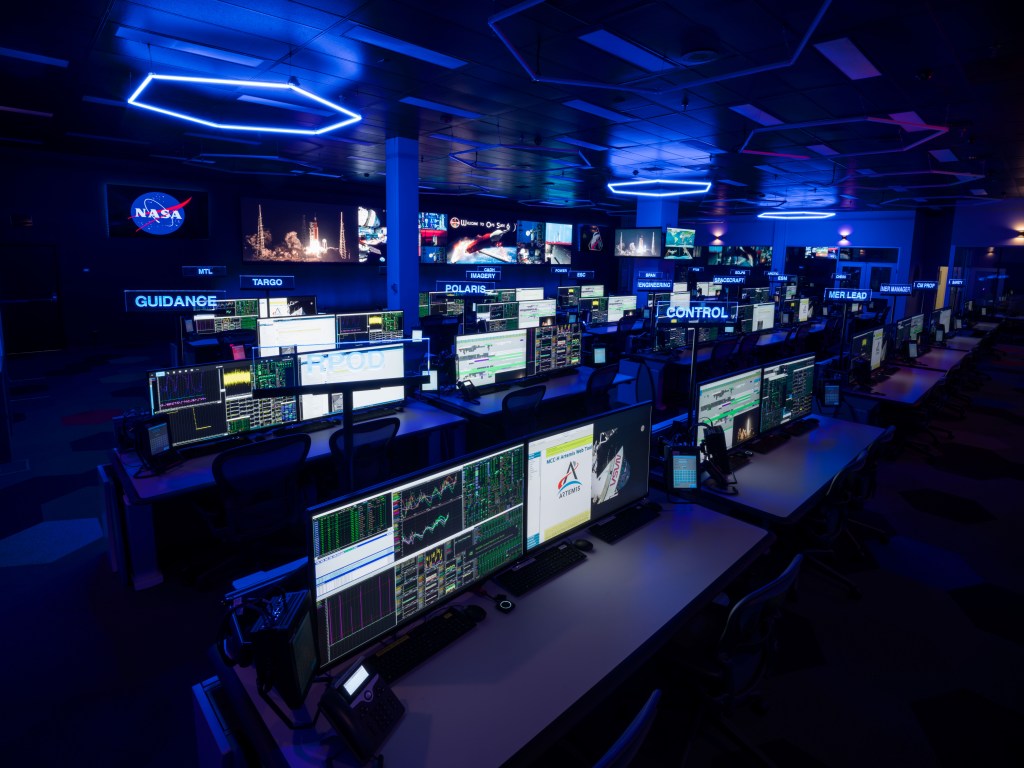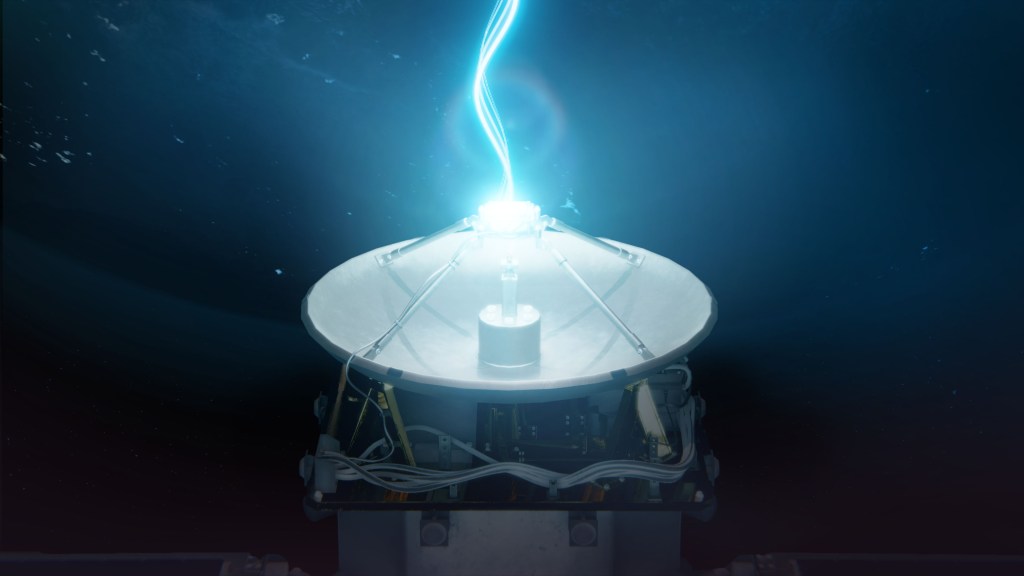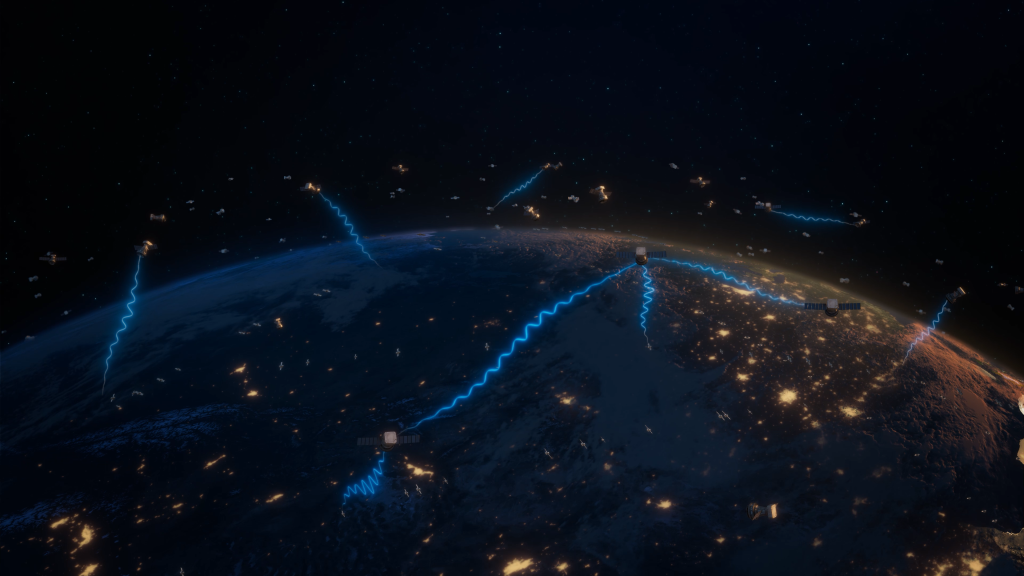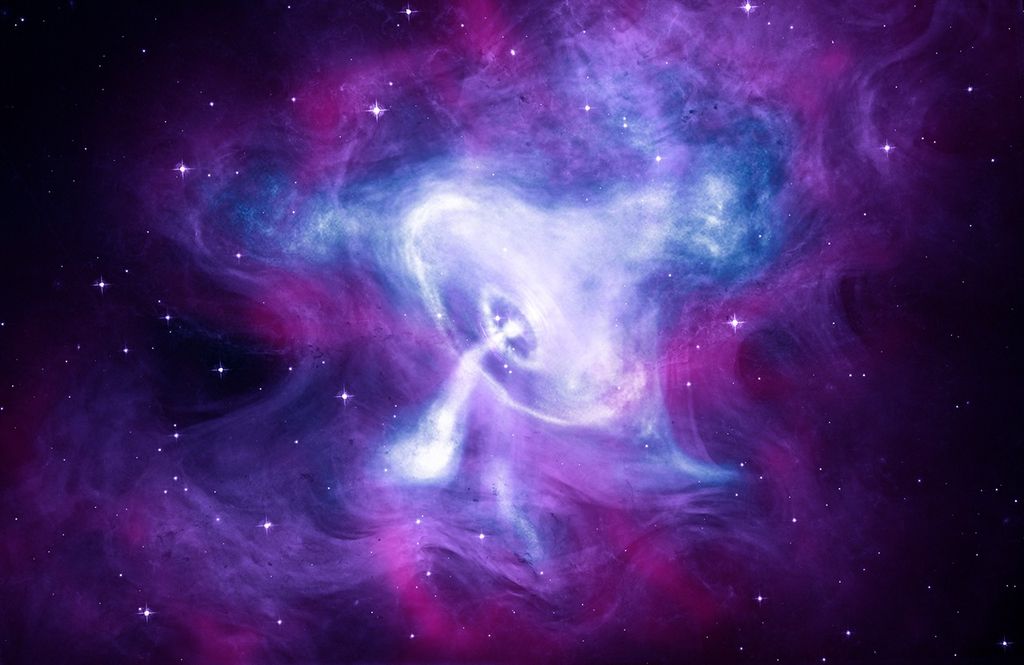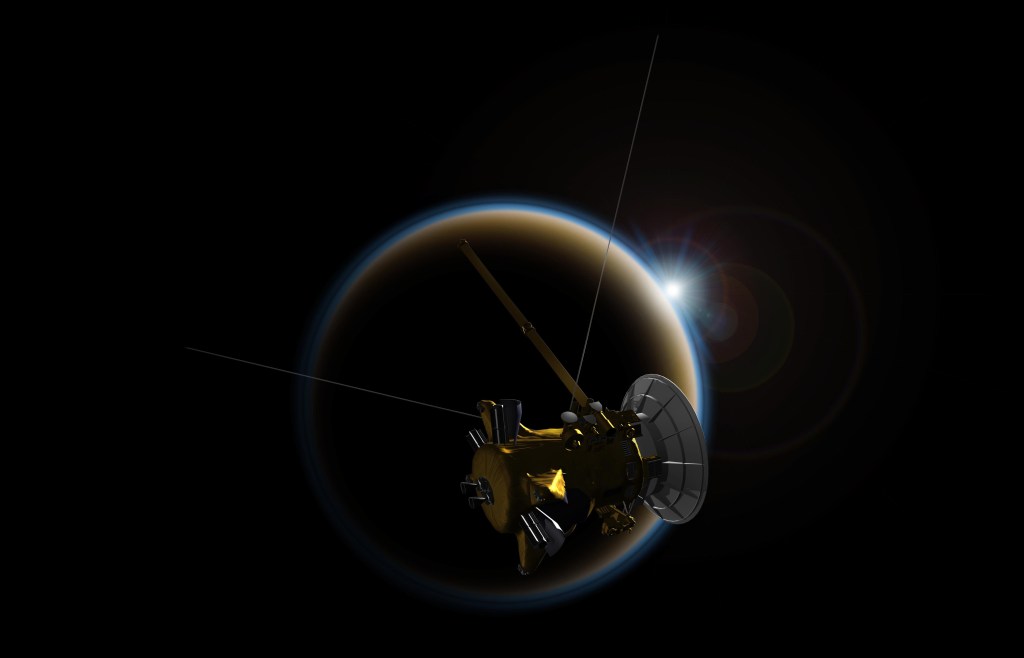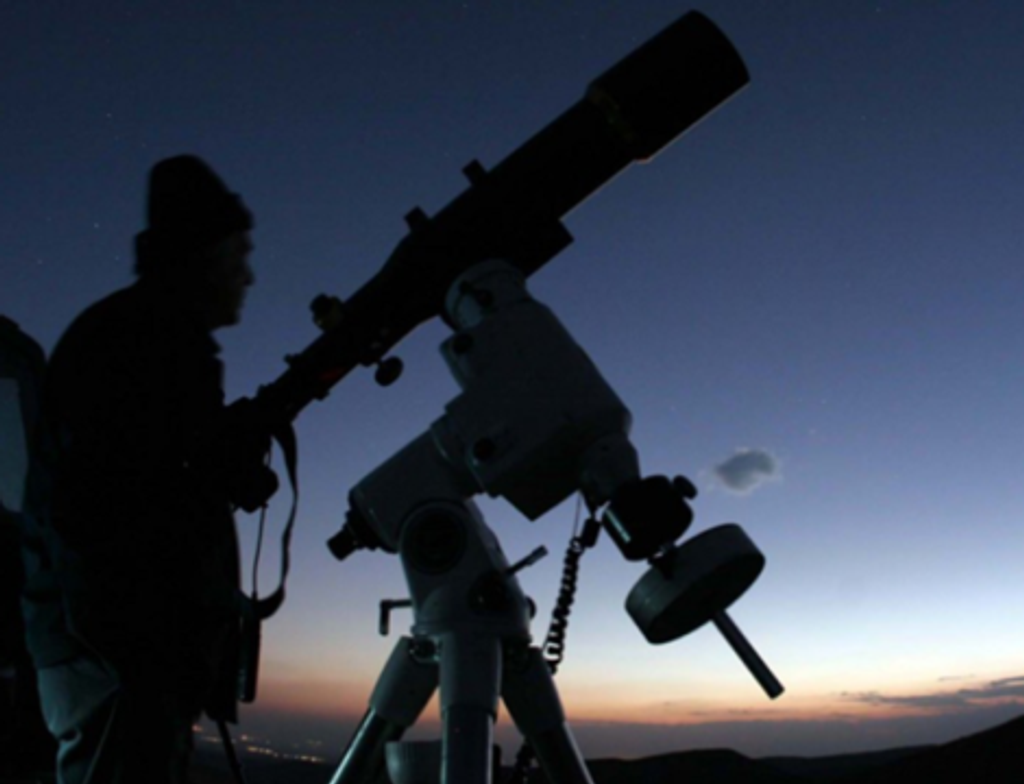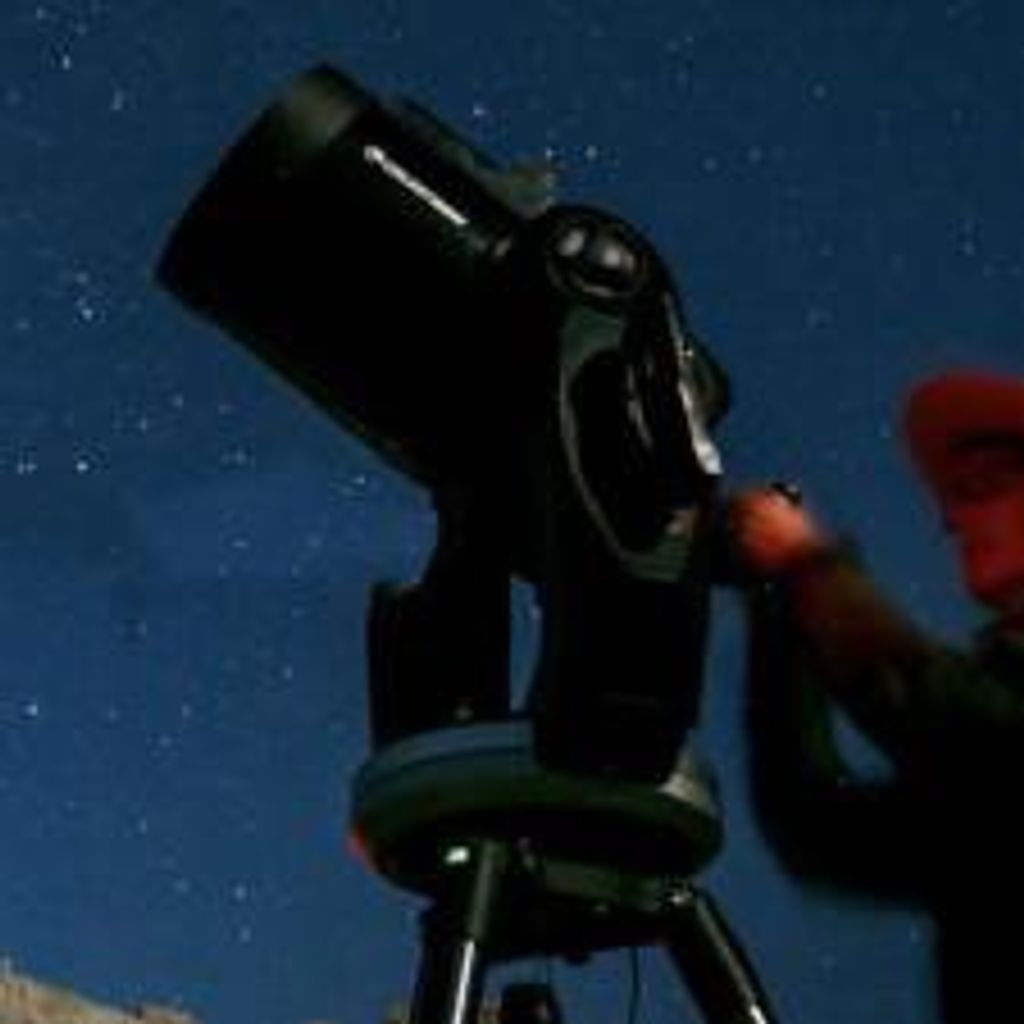1 min read
Hubble Images Comet Tempel 1 Just Before Deep Impact Probe Arrives

NASA's Hubble Space Telescope has snapped an image of Comet 9P/Tempel 1 just days before the Deep Impact spacecraft is scheduled to rendezvous with the comet. This image, taken on the morning of June 30, 2005, shows an undisturbed and quiet comet. This Advanced Camera for Surveys (ACS) Wide Field Camera (WFC) image of Tempel 1 shows a slightly larger view of the comet than was seen in Hubble images released last week.
This image of the comet shows the dusty inner coma around the nucleus, but the solid nucleus itself is below Hubble's resolution. The nucleus was at a distance of 83 million miles (134 million kilometers) when the image was taken.
The ACS/WFC image is a composite of data taken with blue and red filters onboard Hubble. A quiescent comet is seen in this pre-impact image along with elongated star trails. As the telescope was locked on the movement of the comet, the background stars left small trailed arcs during the time the exposures were taken.
About the Object
- DistanceDistanceThe physical distance from Earth to the astronomical object. Distances within our solar system are usually measured in Astronomical Units (AU). Distances between stars are usually measured in light-years. Interstellar distances can also be measured in parsecs.The comet was approximately 0.86AU (129 million km, 80 million miles) from Earth and approximately 1.51AU (224 million km, 139 million miles) from the Sun at the time of these exposures.
- DimensionsDimensionsThe physical size of the object or the apparent angle it subtends on the sky.The comet's nucleus is approximately 5-6 km (3-4 mi) in diameter. It is not resolved in the HST images. The image is 3.1 arcminutes wide, approximately 120,000 km (74,000 mi) at the distance to the comet.
About the Data
- Data DescriptionData DescriptionProposal: A description of the observations, their scientific justification, and the links to the data available in the science archive.
Science Team: The astronomers who planned the observations and analyzed the data. "PI" refers to the Principal Investigator.The Hubble image was created from HST data from Hubble Heritage proposal 10095: K. Noll (STScI), P. Royle (STScI), P. Feldman (JHU), L. McFadden (University of Maryland), H. Weaver (JHU APL), H. Bond (STScI), C. Christian (STScI), L. Frattare (STScI) Z. Levay (STScI), F. Hamilton (CSC/STScI), A. Lubenow (STScI), M. Mutchler (STScI) and W. Januszewski (STScI). - InstrumentInstrumentThe science instrument used to produce the data.HST>ACS/WFC
- Exposure DatesExposure DatesThe date(s) that the telescope made its observations and the total exposure time.June 30, 2005, Exposure Time: 34.5 minutes
- FiltersFiltersThe camera filters that were used in the science observations.F435W (B), F625W (r)
- Object NameObject NameA name or catalog number that astronomers use to identify an astronomical object.9P/Tempel 1
- Object DescriptionObject DescriptionThe type of astronomical object.Periodic Comet
- Release DateJuly 4, 2005
- Science ReleaseHubble Captures Deep Impact’s Collision with Comet
- CreditNASA, ESA, and The Hubble Heritage Team (STScI/AURA); Acknowledgment: P. Feldman (JHU), L. McFadden (University of Maryland), H. Weaver (JHU APL)

Related Images & Videos

Deep Impact Space Probe Collides With Comet
NASA's Hubble Space Telescope captured the dramatic effects of the collision early July 4 between an 820-pound projectile released by the Deep Impact spacecraft and comet 9P/Tempel 1. This sequence of images shows the comet before and after the impact. The image at left shows...
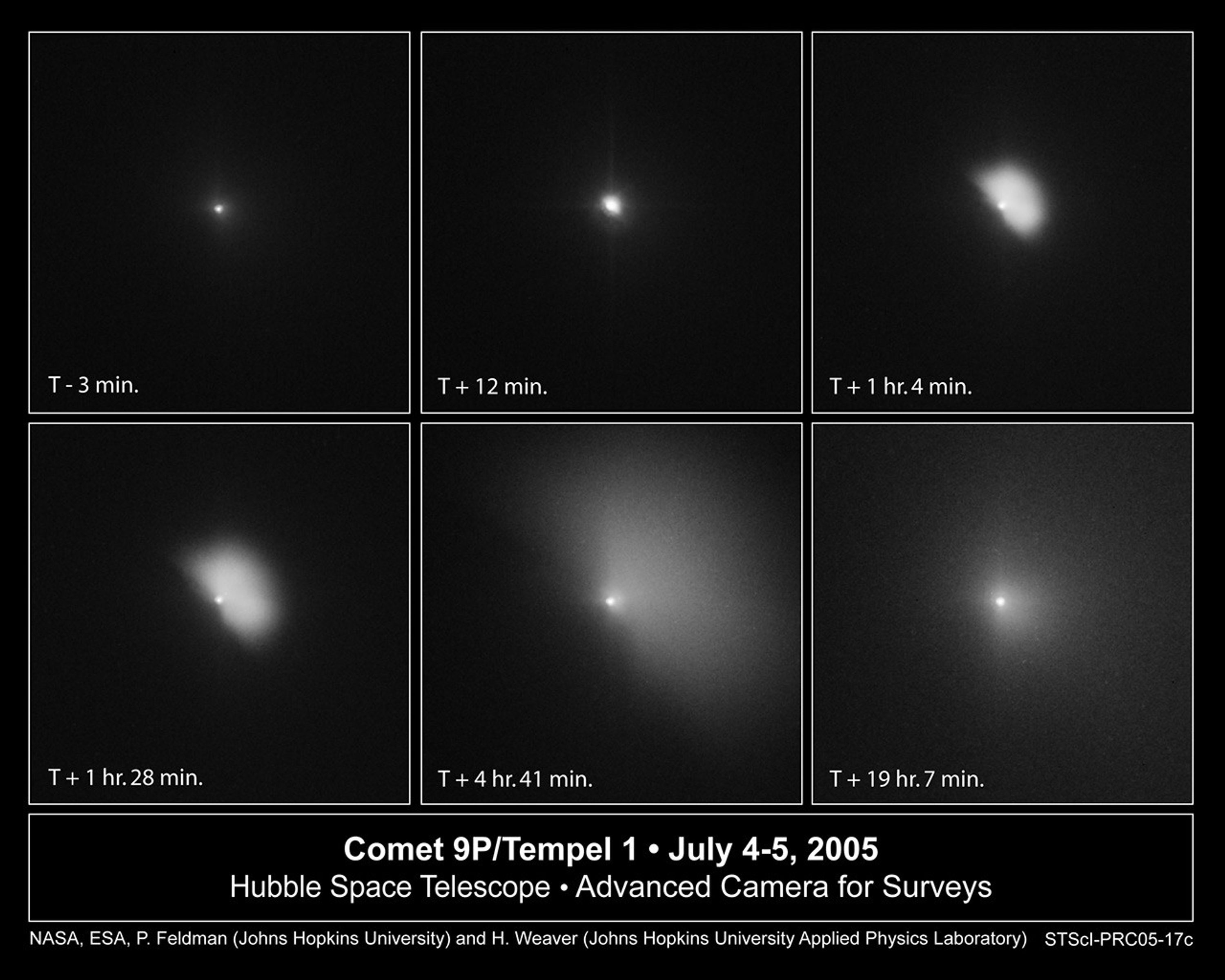
Hubble Monitors Evolution of Dust Plume Following Deep Impact's Collision with Comet
This series of Hubble Space Telescope images captures the ejection of a bright plume of dust following the July 4 collision between an 820-pound projectile released by the Deep Impact spacecraft and comet 9P/Tempel 1. The image sequence dramatically shows the evolution of...

Time-Lapse of Expanding Debris from Comet – July 4
This time-lapse sequence of 20 images, taken by NASA's Hubble Space Telescope, reveals the dramatic effects from a collision early July 4 between comet 9P/Tempel 1 and an 820-pound probe released by the Deep Impact spacecraft. The Deep Impact probe smacked the comet at 1:52 a.m....

Time-Lapse of Expanding Debris from Comet – July 4 (Annotated)
This time-lapse sequence of 20 images, taken by NASA's Hubble Space Telescope, reveals the dramatic effects from a collision early July 4 between comet 9P/Tempel 1 and an 820-pound probe released by the Deep Impact spacecraft. The Deep Impact probe smacked the comet at 1:52 a.m....

Time-Lapse of Expanding Debris from Comet – July 4–5
This time-lapse sequence of 20 images, taken by NASA's Hubble Space Telescope, reveals the dramatic effects from a collision early July 4 between comet 9P/Tempel 1 and an 820-pound probe released by the Deep Impact spacecraft. The Deep Impact probe smacked the comet at 1:52 a.m....

Time-Lapse of Expanding Debris from Comet – July 4–5 (Annotated)
This time-lapse sequence of 20 images, taken by NASA's Hubble Space Telescope, reveals the dramatic effects from a collision early July 4 between comet 9P/Tempel 1 and an 820-pound probe released by the Deep Impact spacecraft. The Deep Impact probe smacked the comet at 1:52 a.m....
Share
Details
Claire Andreoli
NASA’s Goddard Space Flight Center
Greenbelt, Maryland
claire.andreoli@nasa.gov

